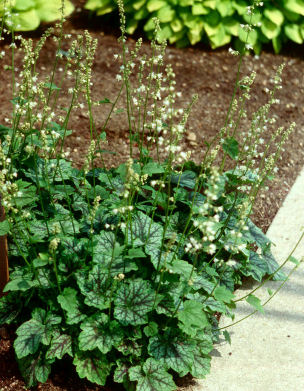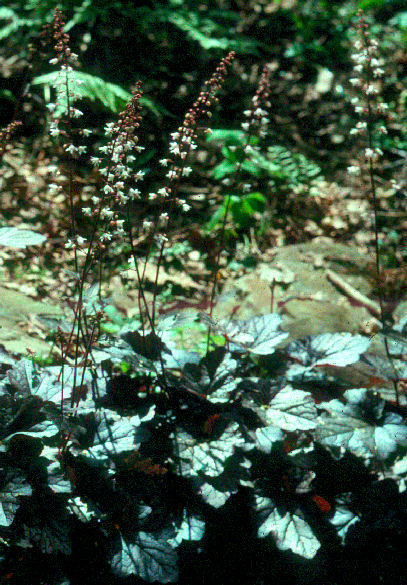

HEUCHERELLA
|
HEUCHERELLA is a horticulturally-derived group of bigeneric hybrids between Heuchera, coralbells, and Tiarella, foamflower. Heucherella combines the characters of both parental types to make pleasing intermediate forms. Heucherellas vary greatly in vigor and character. Unfortunately many of the varieties that have been introduced in recent years grow well under nursery production conditions but quickly fade away under garden conditions that involve stress (and what don’t?). The pigment-deficient yellow leaved varieties seem especially prone to this problem. This is why we list only a couple of forms that have proved enduring. Heucherella have a long period of bloom in mid spring and are best grown in well drained soil in light shade. Heucherella ‘Bridget Bloom’ has been available for many years but is not very interesting compared to the newer hybrids. Read more about heucherella on our Featured Plants pages. See our book for a discussion and critique of other varieties on the market. Clicking on the FP symbol next to the descriptive text will open the variety's Featured Plant page in a new window. |
 |
'Heart of Darkness' (PP#14,489) - This 2001 introduction produces masses of white, foamy flowers on 18” stems over foliage that is tricolored dark maroon on silver-gray on green. The foliage markings will vary over the seasons, but leaves grown during the cool parts of the year will often be dark maroon with a contrasting margin of lime green. FP |
 |
’Quicksilver’ (PP#11,081) - This favorite selection of ours has metallic silver foliage with bronze veining. The dark 18” flower stems bear relatively large flowers that change from pale pink to white as they open. This is a vigorous and enduring perennial by any standard, and it has been consistently the most admired plant in our woodland garden for the past few years. ‘Quicksilver’ won a first prize at the Royal Society for Horticulture perennial plant exposition in September 1997 in Lisse, Netherlands. ‘Quicksilver‘ received an excellent rating by Allan Armitage based on performance at the University of Georgia test gardens, where it bloomed for 9 weeks from April to June (Greenhouse Grower, October 2001). FP |